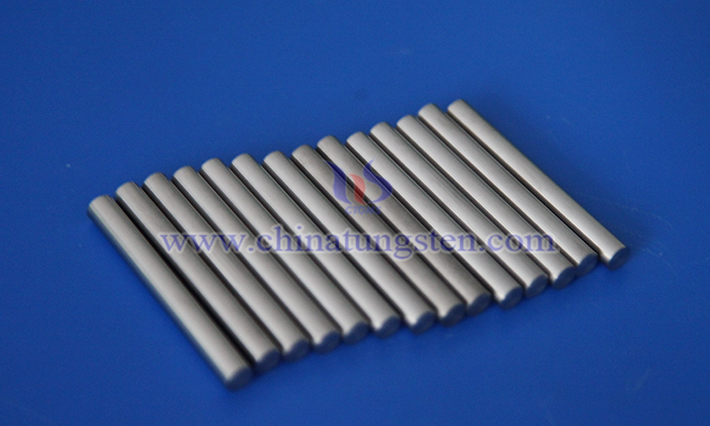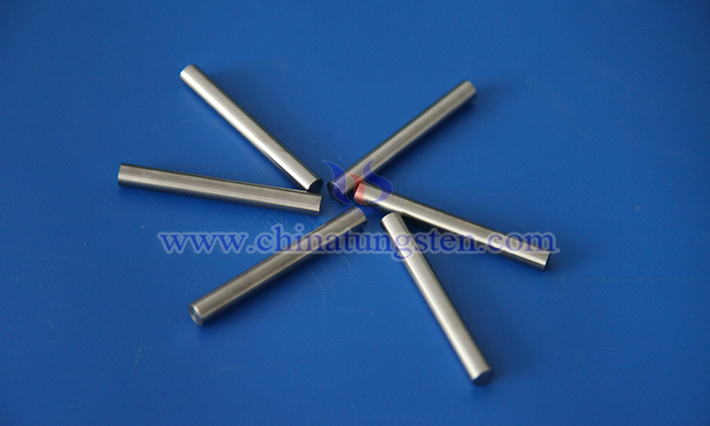Application of Tungsten Alloy Counterweights in Sports Equipment
- Details
- Category: Tungsten Information
- Published on Monday, 28 July 2025 11:45
In the vast world of sports, from the rigorous training of professional athletes to the daily fitness routines of the general public, various sports equipment play a crucial role. Among these, there is a component often overlooked yet vital—the counterweight. Like an unsung hero behind the scenes, it silently contributes to the high-performance capabilities of sports equipment. For instance, in fitness dumbbells, improper counterweighting can not only affect workout effectiveness but also lead to injuries; similarly, in golf clubs, the right counterweight can enhance shot precision and power. Today, let’s delve into a standout counterweight material in the sports field—tungsten alloy counterweights.

1. Tungsten Alloy: The “Dark Horse” of Sports Counterweights
Tungsten alloy, a material that may sound unfamiliar, is actually an alloy made with tungsten as the base, combined with small amounts of elements like nickel, iron, and copper, produced through powder metallurgy.
Tungsten alloy boasts a high density of 16.5–18.75 g/cm³, more than double the density of steel (7.85 g/cm³) and even higher than that of lead (11.34 g/cm³). This characteristic allows tungsten alloy counterweights to significantly reduce volume under the same weight requirements, a major advantage for sports equipment prioritizing portability and space efficiency. For example, in portable fitness gear, using tungsten alloy counterweights can achieve the desired weight without adding excessive bulk, making it convenient for users to carry and use.
In terms of strength and hardness, tungsten alloy also excels, with good resistance to deformation and wear. Even after intense external impact or prolonged use, it maintains its structural integrity and performance stability. Take golf clubs as an example: during the moment of impact, the clubhead endures significant force, and tungsten alloy counterweights can withstand this without damage.
Beyond these advantages, tungsten alloy offers good corrosion resistance, enabling long-term use in humid, acidic, or alkaline environments without corrosion. This is particularly important for sports equipment frequently used outdoors or across different venues, extending equipment lifespan and reducing maintenance costs.

2. The “Hidden Hero” of the Sports Arena: A Showcase of Applications
In various sports disciplines, tungsten alloy counterweights deliver impressive performance, serving as a powerful aid for athletes to enhance their results.
Tennis Rackets: The Secret to Flexible Control
In tennis, every shot is a contest of power and skill. Tennis counterweights act as the “invisible adjusters” on rackets, playing a pivotal role. By cleverly adjusting the racket’s center of gravity, they enable athletes to achieve superior feel and control during shots.
The distribution of a racket’s center of gravity affects the transfer of power and directional control during a shot. An unbalanced center of gravity can disperse force, making the ball’s flight path unpredictable. The introduction of tungsten alloy tennis counterweights addresses this issue. Adding tungsten alloy counterweights along the racket’s edges can effectively shift the center of gravity.

Golf: Balancing Power and Skill
Golf, an elegant yet challenging sport, requires a blend of power and technique in every swing, and tungsten alloy applications in golf clubs provide strong support for players to achieve this balance.
The design of the clubhead is critical in golf clubs. Due to its high density, high strength, and good corrosion resistance, tungsten alloy is an ideal material for manufacturing clubhead counterweights. Strategically placing tungsten alloy counterweights in specific positions on the clubhead can effectively alter the center of gravity and moment of inertia.
When a player swings, an appropriately distributed center of gravity ensures greater stability during the swing, reducing energy loss from improper swing mechanics. Adjusting the moment of inertia can also generate greater torque at the moment of impact, transferring more energy to the golf ball and increasing shot distance. Additionally, for precision shots like chip shots and putts, tungsten alloy counterweights play a key role. They enhance the finesse of the club’s feel, allowing players to more accurately control shot power and direction, improving success rates in getting the ball into or near the hole.
Darts: Assurance of Stability and Precision
In darts, stability and precision are key to victory, and tungsten alloy dart barrels provide a solid foundation for outstanding performance.
The flight stability of a dart impacts the accuracy of the throw. Due to its high density, tungsten alloy can provide significant weight within the limited space of a dart, ensuring greater stability during flight and reducing deviations caused by air resistance or changes in flight posture. When players throw darts, a stable flight trajectory makes it easier to hit the target.

- Chinatungsten Online: www.tungsten-alloy.com
- CTIA GROUP LTD: en.ctia.group
- Tungsten News & Price: www.ctia.com.cn
- Molybdenum News & Price: news.molybdenum.com.cn
- Tel.: 86 592 5129696; Email: sales@chinatungsten.com



 sales@chinatungsten.com
sales@chinatungsten.com